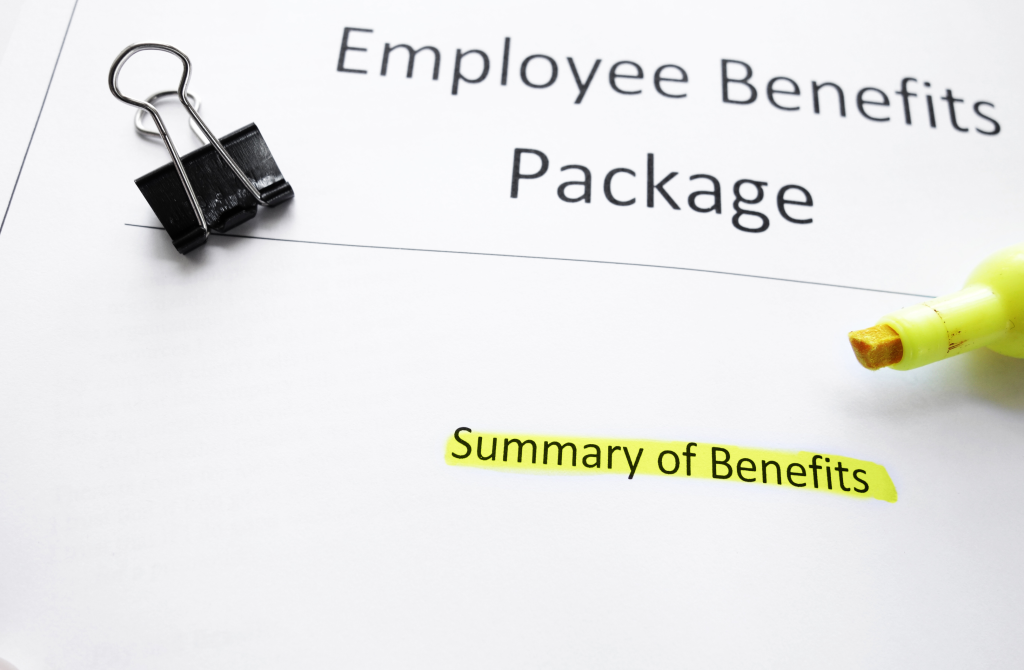
HOW TO BUILD AN INTERNATIONAL EMPLOYEE BENEFIT PACKAGE: A Complete Guide For Expanding Overseas
International employee benefits play a vital role in attracting, retaining, and engaging a productive overseas workforce. The key is to enhance your company’s global presence by offering enticing packages that match or exceed recognized standards in the regions you are operating. Welcome aboard as we guide you through the array of international employee benefits, their importance, and how best to implement them.
Based on a survey of 10,000 full-time employees across the Netherlands, Germany, France, the UK, and the US, the top three perks for employers to consider in their benefits packages to attract and retain top talent are early finishes on Fridays, flexible working hours and company-sponsored retirement plans or pensions.
What are international employee benefits?
International employee benefits refer to the perks, insurance, allowances, or compensation provided to the non-domestic or overseas employees of an organization. These packages often encompass medical insurance, performance-driven bonuses, travel allowances, retirement savings, cost of living adjustments, flexible work hours, and more. An attractive and comprehensive benefits package aids in connecting with the best available talent in diverse regions and ensuring regulatory compliance.
How important are international benefits?
International benefits are crucial in the hiring and retention process. According to a study, 82% of employees stated that an employer’s benefits package influences their decision to accept a job offer.
Companies expanding overseas must understand that employee benefits expectations differ globally and hence, should tailor their package to meet the local standards. Offering such benefits not only helps to comply with legal requirements but also makes employees feel valued, promoting staff loyalty and improved productivity. Benefits serve as an essential part of the company’s overall offering to boost recruitment and enhance employee satisfaction.
What are personalized employee benefits?
Personalized employee benefits are a modern approach to benefit packages that focus on individualized needs rather than a one-size-fits-all strategy. 69% of organizations are exploring or implementing more flexible benefits packages as it boosts employee satisfaction and increases benefit uptake rate.
Companies can offer personalized benefits through allowances for expense reimbursement, enabling employees to dictate how they utilize their benefits. These tailored packages are especially effective for small overseas teams, promoting cost savings and minimizing administrative time while enhancing team morale.
What are the different types of international employee benefits?
Employee benefits globally vary significantly, reflecting a blend of statutory requirements and cultural expectations in diverse regions. This variation becomes even more nuanced when considering differing generational preferences, highlighting the importance of a tailored approach towards international benefits packages.
Therefore, we created a list for you with the most common international employee benefits:
1. Compensation package
A competitive compensation package is vital for attracting and retaining top talent worldwide. It extends beyond salaries, encompassing benefits like variable pay, accommodation, holiday allowances, career development, medical insurance, and work-life balance initiatives. Personalization of these benefits and continuous market benchmarking are crucial for maintaining appeal. Such comprehensive and tailored packages not only attract global talent but also foster employee loyalty and motivation.
2. Healthcare & Life insurance
Health insurance benefits for dependents, and life insurance are key components of an international benefits package. Health insurance, offering medical, dental, and vision coverage, is essential and varies in extent, with employers covering costs either partially or fully. Benefits for dependents, covering health insurance for an employee’s family, are highly valued and can significantly enhance employee engagement and retention. Companies known for offering these benefits are particularly appealing to senior employees with families.
Finally, life insurance, crucial for those in hazardous industries, offers financial protection to an employee’s beneficiaries in case of death. Employees can choose from basic or voluntary plans, enhancing their sense of job security and trust in the employer.
Together, these benefits not only address individual and family healthcare needs but also contribute to overall job satisfaction and financial security.

3. Retirement plans
Retirement Plans serve as a well-established component of international employee benefits. These can include pension plans, 401(k) plans, or provident funds. They encourage employees to remain with the company, fostering a loyal career within the business. This benefit offers a sense of financial security for employees post-retirement, securing a more stable future. However, retirement plans must comply with the local legislation, as failure to adhere could inadvertently open up litigation possibilities. Companies aiming to retain senior employees or planning life as an employer for extended periods can benefit considerably from offering retirement savings options.

4. Health Stipend
A health stipend is an allocated allowance given to employees to cover healthcare costs outside insurance, such as gym memberships, yoga classes, or wellness programs. According to SHRM’s Employee Benefits Survey, 64% of U.S. employers provide wellness resources.
What makes health stipends stand out is the flexibility, as employees can use them to cover various wellness and healthcare expenses like prescriptions, chiropractic care, or primary care membership. It gives the employee greater control over their health, leading to increased life quality and job satisfaction. Remember, health stipends are taxable in some countries, so consulting with a tax professional is advisable.
5. Holidays
Holidays or Paid Time Off (PTO), incorporating vacation, sick leave, and public holidays, are a critical part of an employee benefits package. For instance, there is a concept called “Golden Week” in Japan – a series of consecutive public holidays that take place at the end of April and early May. Many Japanese people take extended vacations or travel during this time. Offering such local customized holidays signals respect for the regional practices, promotes staff satisfaction, and may even enhance productivity post-leave. Comprehending local customs and holidays are crucial to successfully crafting an international benefits package.
6. Leave
Leave policies are of paramount importance in any international benefits package. They help contribute to work-life balance and mental well-being of employees. Standard leave includes annual paid leave, sick leave, and compassionate leave. Each country has different annual leave regulations. For example, as per Chinese law, the minimum required annual leave is five days, while in Germany, employees usually receive at least 20 paid vacation days per year. Having a clear, fair, and compliant leave policy plays a critical role in retaining employees and maintaining good employer-employee relationships.
7. Adoption Leave
Adoption Leave is an increasingly recognized aspect of international employee benefits. This benefit provides paid or unpaid time off for employees who have recently adopted a child. For example, in Sweden, the parental leave policy is quite generous, offering “shared leave” for the family. Aligning adoption leave policies with local regulations and cultural expectations can create a sense of inclusion and support, making it an attractive feature for prospective or current employees planning to extend their families.
8. Bonuses
Bonuses are a common and widely favored form of international employee benefits. They are usually financial rewards given in addition to normal salaries, either based on company performance, individual accomplishments, or as per local customs.
For instance, in countries like Spain and Austria, it is common for employers to offer 13th or 14th-month bonuses. Offering bonuses can increase employee motivation and job satisfaction, hence improving overall performance and productivity.
Stock options as an additional bonus for employees are increasingly in demand, offering staff a stake in the company’s success and aligning their interests with those of the business.
Twitter for example gave bonuses to their employees during the pandemic.

9. Transportation stipend
A transportation stipend, also known as commuter benefits, is a reimbursement for employees’ transportation costs to and from work. It can cover expenses ranging from parking fees, public transit passes, or vehicle maintenance to enhancing employee convenience and lowering their commuting expenses. Companies like Google and Facebook often provide commuter benefits to their employees. Important to note is that local tax laws dictate the specifics of offering such benefits, so being aware of them is critical to providing compliant transportation stipends.
10. Workplace benefits
Workplace benefits are integral to creating supportive and competitive environments in companies. These benefits are not just recruitment tools but also enhance employee satisfaction and help achieve organizational goals. They often include free healthy meals, an in-house barista, yoga and well-being classes. Flexible work options like job sharing, remote working, and flexible hours aid in balancing work and personal life, benefiting parents and caregivers. Educational and professional development opportunities are provided for career advancement.

How to initiate a global benefits strategy in 6 steps:
Implementing a global benefits strategy goes beyond creating an attractive benefits package; it requires integrating these benefits into the company’s culture and aligning them with business goals. This involves setting objectives like employee retention and productivity, assessing the benefits structure for regional suitability and legal compliance, and regularly updating the strategy to meet evolving demographics, business conditions, and employee expectations.
Here are the six steps to creating a comprehensive global benefits package:
- Align with company values: Begin by aligning the benefits you plan to offer with your company’s core values and culture. This can have a significant impact on attracting and retaining the right talent.
- Understand local labor laws: Different countries have different labor laws and regulations. It is critical to research and understand the requirements in each country where you have employees to ensure your benefits package is compliant.
- Study market trends: Continuously monitor market trends and benchmark your benefits against those offered by competitors in the relevant markets. Data-driven analysis can provide a clear image of what potential employees may expect or wish for.
- Consider employees’ needs: Employee needs vary depending on factors such as locality, age, and role and it is important to consider these individual needs when developing the benefits package.
- Maintain flexibility: It is a good idea to keep your benefits package flexible. This means providing a variety of options that employees can choose from based on their unique needs and circumstances.
- Communicate effectively: Once the benefits package has been developed, communicate the details clearly to the employees, making sure they understand the value of what they’re receiving.
Remember, creating a global benefits strategy is not an overnight process. It requires continuous efforts and dedicated resources. Yet, the right global benefits strategy can be greatly beneficial in terms of attracting and retaining top talent, leading to long-term success for your company. Contact us to create a global benefit strategy that aligns with your company’s objectives and values.
In conclusion, crafting an international employee benefits package is crucial for attracting, retaining, and energizing a global workforce. Essential elements like health insurance, dependent benefits, retirement plans, and leave policies play a significant role.
It is vital to offer benefits that comply with local regulations while enhancing job satisfaction and security. Prioritize personalization and alignment with long-term business goals.
To effectively assemble an impactful international benefits package that underscores your company’s commitment to its employees globally, consider partnering with ThisWorks. Let us help you build a benefits strategy that resonates with your team, no matter where they are. Act now to make a meaningful difference in your global workforce strategy with ThisWorks.
Frequently Asked Questions (FAQ)
What are some common international employee benefits?
Common international employee benefits typically include health insurance, retirement savings, paid vacation, paid sick leave, and wellness programs. Additional benefits that make a difference can be flexible work schedules, remote work options, housing benefits, life insurance, disability insurance, and stock options. Always remember local laws, regulations, and cultural norms when deciding on benefits to ensure they meet your employees’ needs.

How to offer international employee benefits?
Offering international employee benefits involves a firm understanding of local laws and cultural norms. Here is how you can build a top-notch international benefits package:
- Identify the countries where you plan to hire or already have employees. This helps in understanding the local laws and regulations for benefits packages.
- Conduct thorough research on each country’s employment laws and regulations, including minimum wage, leave entitlements, social security, and tax laws.
- Check out the websites of employer of record (EOR) providers who offer free access to country hiring guides including benefits details.
- Identify your employee’s core benefit needs through a survey to understand the top benefits they prefer.
- Based on your survey findings, identify those benefits that align with your business objectives and provide maximum value to your employees.
- Develop a tailored international benefits package that meets the minimum requirements for each country.

Remember, your internal team will need to oversee the benefits administration in accordance with local laws and regulations. This ensures your benefits package remains compliant and competitive.
How can I ensure compliance when offering international benefits?
To ensure compliance when offering international benefits, you must first understand the local laws and regulations of the countries where your employees are located. This includes knowing specific criteria on minimum wage, tax laws, and social security obligations. It is also helpful to consult with local HR experts or use Employer of Record (EOR) services such as ThisWorks, which can manage legal and regulatory compliance on your behalf. Always maintain open communication with employees to ensure their needs and expectations are met compliantly.
How to handle international employee benefits?
Handling international employee benefits involves thorough research on regional laws and customary practices, align with your company’s objectives, and meet the needs of your global staff. Employers also need to administer benefits in multiple languages and currencies, adapt to different time zones, and satisfy various regulations. Utilizing a comprehensive human resource information system (HRIS) can help employers manage global benefits effectively. Using an employer of record (EOR) can also streamline benefits management and ensure legal compliance.
Here are the top 6 employee benefits trends for 2024:
- Personalized employee benefits: As the workforce becomes more diverse, the need for personalized benefits has taken the center stage. Employees value the ability to customize their benefits package as per their unique needs and circumstances. For instance, the younger generation might opt for additional educational support, while employees planning a family might prioritize childcare support.
- Increasing focus on mental health: With the recent rise in awareness about mental well-being, more employers are prioritizing mental health support services. This can range from providing access to therapy sessions, stress management programs, to introducing wellbeing days. The four-day workweek is gaining popularity as a trend, with some companies in various countries such as Germany already adopting this model. This approach is seen as a progressive step towards improving work-life balance and employee well-being.

- Remote work policies: The shift towards remote working in the wake of the pandemic has affected the benefits landscape, too. Employees are now seeking benefits that support a remote working environment, such as home-office setup allowances, flexibility in working hours, etc.
- Sustainability benefits: In response to growing concerns about climate change, sustainability benefits are a rising trend. This includes benefits like carbon offset allowances, green energy incentives, or even time-off for volunteering in environmental causes. This trend is particularly prominent among younger, environmentally-conscious employees.
- Upskilling and reskilling opportunities: Employees are increasingly seeking opportunities for growth and skill development. Employers responding to this trend offer benefits like financing for further education, professional development courses, and more.
- Comprehensive health and wellness perks: Besides mental health support, comprehensive health and wellness programs are becoming integral to the benefits package. This includes insurance plans, fitness programs, nutrition counselling, and preventive health checks.
Ultimately, it is significant for companies to stay current with these trends to not only attract but also retain talented professionals. Offering a meaningful, attractive benefits package shows an investment in the well-being and career growth of the employees, which in turn enhances the overall performance and company culture.
Here are the top 5 most popular employee benefits:
- Health insurance: Comprehensive health insurance is a significant benefit employees look for in their employment package. This can encompass coverage for routine medical care, hospitalization, prescription drugs, and sometimes dental and vision care.
- Retirement savings plans: Retirement plans such as Pension or 401k programs offer long-term financial security. Employers may contribute to these plans, matching the employee’s contribution up to a certain percentage.
- Paid time off (PTO): Paid vacation days, sick leave, and personal days allow employees to rest, recharge, and take care of personal obligations without worrying about loss of income. Additional forms of PTO that are increasingly recognized include maternity, paternity, and parental leave.
- Flexible work schedules: As the nature of work evolves, flexible schedules and remote work options have increased in importance. This flexibility can significantly improve work-life balance.
- Wellness programs: Companies are investing in their employees’ mental and physical well-being through wellness programs. These may include gym memberships, mental health support services, nutritional advice, or resilience building workshops.
Unique and niche benefits such as pet insurance, home office stipends, and long-term care insurance also gain popularity, tailored to specific industries or employee demographics. Keeping abreast of popular benefits trends can help build a competitive and holistic benefits package that attracts and retains top talent.
If you want to learn more about global business expansion, check out this blog.
Article Author – Gino Peters
Gino Peters is the Commercial Director at ThisWorks, with a rich history of nearly a decade in international payroll. Throughout his tenure, he has consistently kept abreast of evolving labor legislation, ensuring that ThisWorks remains at the forefront of industry knowledge. Beyond his vast expertise, Gino is deeply committed to advising and guiding clients and partners with precise insights. His leadership guarantees that all content and operations at ThisWorks meet the highest standards of clarity, accuracy, and compliance.
Follow him on Linkedin
Book a free consultation with Gino Peters





